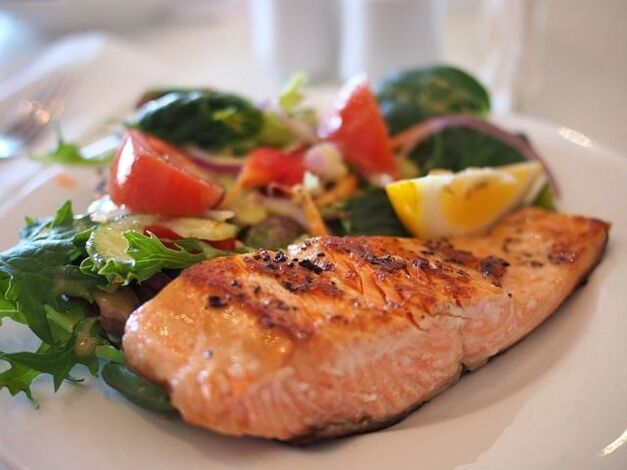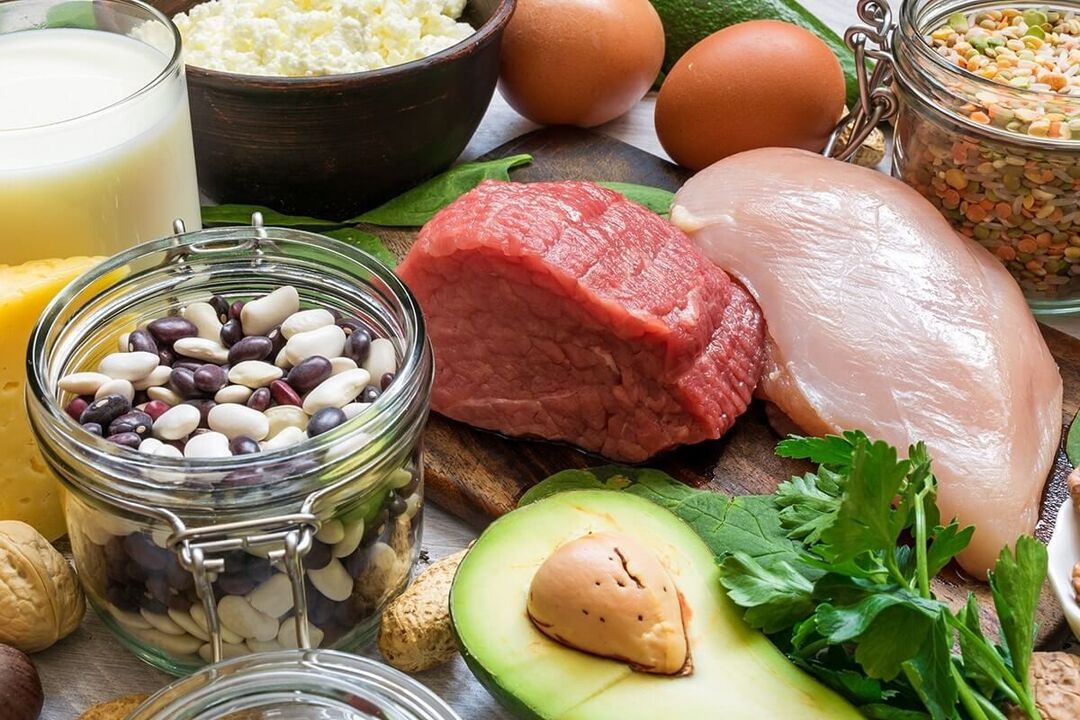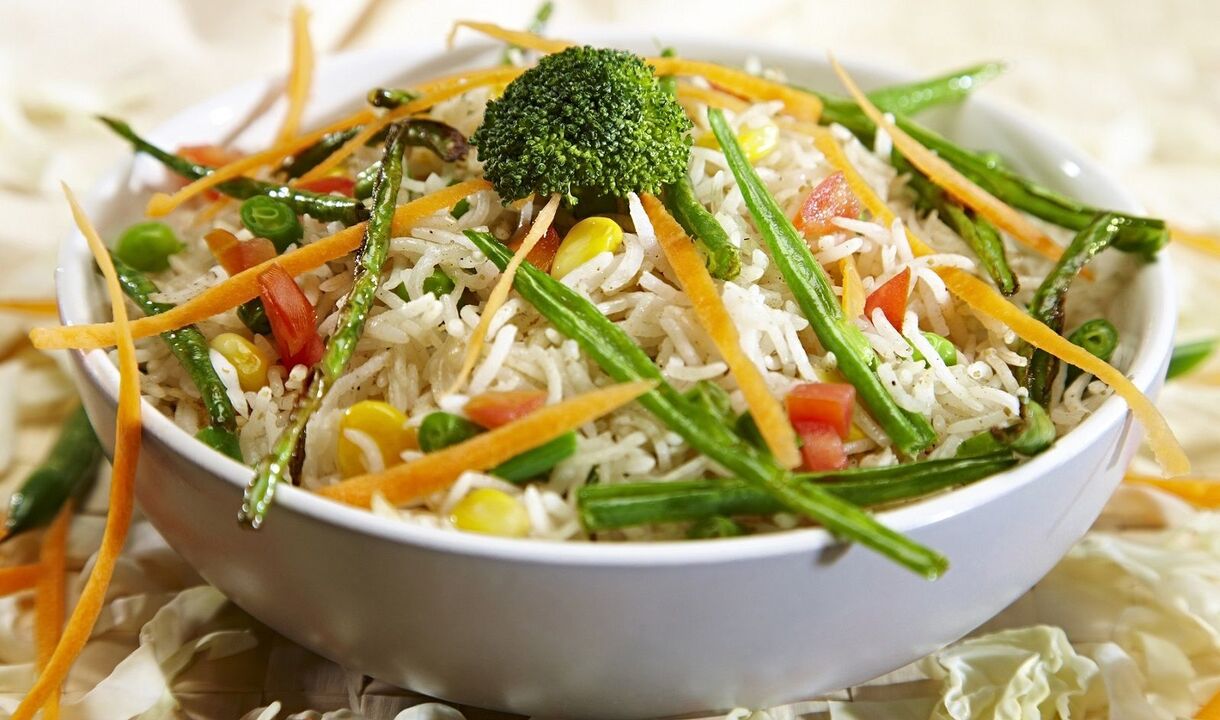
There are some people who are satisfied with their reflection in the mirror. Diet helps improve your appearance and health. From Greek, diet is translated as diet, way of life.
Many diets have been developed to maintain beauty and health. But, it is optimal to create a menu for a week of proper nutrition for weight loss on your own.
Sample menus with recipes will help you navigate your product selection, diet organization and food consumption regimen.
Proper nutrition for weight loss: general rules
A person gains excess weight gradually; one should also get rid of it regularly. When losing weight, the body experiences stress. To reduce negativity, proper nutrition is required.
- Compliance with the regime. Food is taken at certain hours with an interval of 3-4 hours between meals.
- Drink more fluids. Water speeds up metabolism, removes toxins, and promotes food absorption.
- Eat a varied diet. Diet includes foods that contain protein, carbohydrates, lipids, vitamins, and minerals.
- Balanced diet. When compiling the menu, the proportion of BJU is observed. Increase your intake of fresh vegetables and fruits. Plant foods are rich in vitamins and fiber, which help cleanse the body without losing important microelements.
- Counting calories. To lose weight safely, the recommended daily calorie intake for women is 1300, for men - 1600.
- Reduce consumption of animal fats and fast carbohydrates. Abuse of this type of nutrient increases the risk of obesity and endocrine pathology.
- Refusal of alcohol. Alcohol destroys physical and mental health.
Healthy eating: a list of foods for weight loss
A healthy diet includes only healthy foods. Do not focus on the vitamins contained in vegetables and fruits. The menu should contain all the nutrients necessary for normal life.

List of correct products:
- water, eat about 1. 5 liters a day + liquid meal (soup);
- meat: poultry, beef, veal;
- fish: sea bream, haddock, salmon;
- seafood: squid, clams;
- quail and chicken eggs;
- grains: buckwheat, bulgur, rice;
- legumes;
- dairy products with the addition of lactic acid bacteria: fermented baked milk, yogurt, kefir;
- garden plants, root crops;
- fruits of trees, bushes;
- greenery;
- Nuts, seeds are limited.
The list is extensive, you can cook a variety of dishes. Daily nutrition includes plant and animal foods and vitamins.
For greater benefits, try to eat vegetables and fruits in season.
Planning a Healthy Food Menu
Reviewing your diet means changing your lifestyle, and they require making a plan that you stick to in the future.
- Daily regimen. People haven't woken up with the sun for a long time. A relatively high percentage of men and women work at night. There are also "owls" and "larks". These factors are fundamental in the breakfast and dinner schedule.
- Diet. Before you create a proper nutrition menu, you need to decide on your goals. There is one diet for weight loss, and another for maintaining health. If you need to lose more than 5 kg, the menu is limited, but not sudden.
- Visual plan. The diet is scheduled for the week by the hour. It is easier to enter data into a table. This will allow you to monitor quality and quantity. The easiest way is to download a special application.
- Smooth transition. The change is carried out smoothly. Sharp calorie restriction often gives the opposite result. When there is a lack of nutrients, the body makes reserves in the form of fat storage. In the first week, it is enough to exclude harmful foods.
Weekly menu for men: features
Most men play sports or go to the gym. Increased load and anatomical features affect the diet.

The level of physical activity is the first thing to take into account when making a man's menu for the week.
The prepared menu may contain different products, but the diet must meet the following requirements:
- Delicious breakfast. Energy consumption in men is on average 1/3 more than in women. Breakfast "launches" the body. A man's breakfast should be complete. Contains animal proteins, moly- and monosaccharides, lipids. The latter provides energy.
- Dinner is serious business. Dinner 2 hours before bed. The set of products and the calorie content depends on several factors. During intensive night training, you should increase the spent resources - eat protein and carbohydrates (mainly disaccharides and polysaccharides) in the right ratio.
- Strict calculation of protein intake. Protein is the building block of tissue. The stronger sex should take it in larger quantities than women. But excessive protein leads to increased uric acid formation and, as a result, kidney and joint pathology.
- Fat. Lipids play an important role in the formation of steroids. The daily norm for men is 25-30% of all nutrients used. In addition, the consumption of vegetable fat is minimized. It contains α-linoleic acid, which increases the risk of developing prostate adenoma.
- Vitamins and minerals. Zinc and iodine are important for men's health.
Estimated menu for weight loss for a week for 1500 kcal
Organize proper nutrition for a week for weight loss including choosing foods based on their calorie content. A daily intake of 1500 kcal is suitable for men who want to lose weight or women who want to keep in shape. The diet is not strict, suitable for long-term use. If you count calories correctly, you can lose up to 3 kg in 7 days.

You should start eating not on Monday, but starting tomorrow!
Sample diet for a week:
| day | breakfast | dinner | dinner |
| me | omelette, rice porridge | soup, roast breast | steamed potatoes with salmon, kefir |
| II | oatmeal, cheese, coffee | mushroom soup, buckwheat, bread | cottage cheese, yogurt |
| III | cheese, yogurt, muesli | trout baked with pepper | asparagus with herbs, roasted fermented milk |
| IV | seaweed salad, tea | Lenten pickles, spaghetti | boiled breast, salad, juice |
| V | boiled eggs, buckwheat | baked haddock with dried fruits, rice | cottage cheese, apple |
| VI | oats, tea with milk | eggplant and tomato stew | yogurt, pineapple |
| VII | cottage cheese, orange | bean soup, stewed turkey | vinaigrette, juice |
Diet menu for the week (table) with recipes
Dietary nutrition involves limited consumption of animal products. To accelerate weight loss, reduce daily calorie intake by 100 kcal. You can accurately calculate the energy value using an online calculator.
| day of the week | breakfast | dinner | dinner |
| Monday | apple, 2 slices of bread | vegetable puree soup, steamed potatoes | ham, grapefruit |
| Tuesday | yogurt, cheese, tea | lean beetroot soup, boiled rice | steamed fish, vegetable juice |
| Wednesday | Muesli, banana | barley porridge, boiled beef | fresh vegetable salad, tea |
| Thursday | yogurt, low-fat hard cheese | vegetable soup, apple | steamed cauliflower |
| Friday | cornflakes, juice | cut potatoes, bread | kefir, strawberry |
| Saturday | omelette with herbs, chicory | cut tilapia, cucumber, pepper | Ryazhenka, oatmeal cookies |
| Sunday | vegetable casserole, tea | sorrel soup, turkey meatballs | cheese, cucumber |
Diet dishes are prepared simply and quickly. Cut potatoes will appeal to all family members.
The right nutrition menu for weight loss for a week
When creating a healthy eating menu for the week, you need to adhere to two main goals: create a calorie deficit for weight loss by eliminating high-calorie foods from your diet and provide the body with healthy nutrients. The basis of a proper daily diet should be high-protein foods (meat, fish, cottage cheese), which stimulate the metabolism and are a valuable source of essential amino acids.
It is also recommended to consume only complex carbohydrates (whole grains and non-starchy vegetables) to supply the body with energy without causing the accumulation of fat tissue.
It is necessary to exclude simple carbohydrates from the diet menu, which cause the rapid onset of hunger, weight gain and a constant feeling of fatigue.
Priority should be given to saturated fats from plants and animals (no more than 30 grams per day), because the lack of fatty acids slows down the metabolism, reduces the production of female sex hormones and leads to menstrual irregularities. Sources of healthy fats include nuts, sunflower seeds, and fatty fish.
Basic principal

- Remove prohibited foods and drinks from the menu.
- Drink the optimal amount of water every day (30 ml per 1 kg of weight).
- Maintain daily calorie intake (from 1200 kcal to 1600 kcal). To calculate the energy value of food, you can use the calorie table.
- The amount of BJU in the daily menu should be 40-45% protein, 15-20% fat and 30-40% carbohydrates.
- Use the plate rule: half of the portion of the main course should be vegetables, and a quarter each should be protein (meat, cottage cheese) and carbohydrates (cereals).
- Eat fruits before 16. 00, and sweets (honey, dried fruits) are allowed before 12. 00.
- Avoid overeating, because eating more food leads to an increase in daily calorie intake and slows down the weight loss process.
- Eat food slowly and chew thoroughly to promote proper nutrient absorption.
- Control your salt intake, as excess salt leads to swelling.
What you can and can't eat (table)

| Flour products | |
| Baking from whole grain wheat, rye, buckwheat, almond, oat flour without sugar | White bread made from premium wheat flour, sweet pastry |
| meat | |
| Lean pork, rabbit, beef | Fatty pork, beef. sausage |
| Bird | |
| Chicken, turkey | Ducks, geese |
| Fish and seafood | |
| Cod, hake, chum salmon, pike, pike perch, mullet, pink salmon, tuna, mackerel, herring, trout, herring, pollock. Seaweed, shrimp, oysters | Salted fish, smoked, canned food, crab sticks |
| Eggs | |
| Boiled, in the form of an omelette, as part of a meal | |
| Dairy product | |
| Cottage cheese (1-8% fat), kefir, yogurt, low-fat sour cream | Fat cottage cheese, sour cream, cream. Store-bought yogurt with added ingredients, layered cheese |
| Grains | |
| Green and brown buckwheat, bulgur, pearl barley, Artek grains, oats, brown rice. Beans, chickpeas, green beans, lentils, peas | Instant oats, sugar granola, white rice, semolina |
| Oil | |
| Olive, linseed, coconut, sunflower and other vegetable oils. Butter and ghee | Margarine, mayonnaise |
| Vegetables | |
| Cucumber, tomato, carrot, onion, white cabbage, red cabbage, Chinese cabbage, cauliflower, eggplant, avocado, zucchini, bell pepper, spinach, lettuce, spinach, parsley, dill. Sauerkraut | Conservation. Mashed or fried potatoes |
| fruits | |
| Apple, pear, plum, raspberry, cherry, strawberry, cherry, currant, mulberry, peach, orange, tangerine, grapefruit, apricot, kiwi. Limited: bananas (1 per day), grapes | |
| Dried fruits and nuts | |
| Walnuts, cashews, hazelnuts, nutmeg, pistachios, almonds (no more than 20 g per day). Prunes, dates, figs, apricots, mangoes, dried apricots (no more than 25 g per day) | Peanuts, raisins and dates in large quantities |
| Dessert | |
| Honey, date syrup, sweetener, dark chocolate | Candy, ice cream, candy, milk and white chocolate, cookies |
| Drinks | |
| Black, green, mint, chamomile tea, coffee, chicory, barley drinks without sugar | Alcohol, sweet carbonated drinks |
How to make a menu
In order for nutrition to be beneficial and contribute to weight loss, it is important to follow the basic rules for creating a menu for the week, taking into account the physiological needs of the body:
- eat a daily allowance of protein (1-1. 5 grams per kilogram of weight), which is distributed throughout the day;
- for breakfast, it is recommended to prepare dishes consisting of protein and slow carbohydrates for long-term satiety, for example, omelets and porridge, oatmeal with curd filling, etc. ;
- lunch should consist of protein, carbohydrates and green vegetables to provide the body with vitamins and fiber;
- the number of meals per day is calculated individually depending on the daily routine;
- You cannot eat food without feeling hungry, because eating healthy food without physiological needs leads to overeating.
Healthy eating menu for this week

Monday
- Breakfast: whole grain bread sandwich, boiled egg, hard cheese, coffee with milk;
- Lunch: turkey meat, boiled bulgur, vegetables, apple;
- Afternoon snack: cottage cheese casserole with berries;
- Dinner: chicken salad with cucumber and cabbage.
Tuesday
- Breakfast: cheesecake (with bananas instead of sugar), sour cream, tea or coffee;
- Lunch: tuna salad, banana;
- Afternoon snack: liver pancakes, salad with tomatoes and cucumbers;
- Dinner: grilled salmon with broccoli.
Wednesday
- Breakfast: rye bread, avocado, cheese, coffee with milk;
- Lunch: grilled turkey fillet, boiled buckwheat, fresh cucumber, kiwi;
- Afternoon snack: vegetable rolls in lavash made from whole grain flour;
- Dinner: cottage cheese and protein casserole.
Thursday
- Breakfast: whole grain pancakes, cottage cheese with berries;
- Lunch: chicken fillet, durum wheat pasta, tomato and cheese salad, pear;
- Afternoon snack: baked apple and peach;
- Dinner: boiled shrimp, salad with eggs, onions and lemon juice.
Friday
- Breakfast: 3 omelets with tomatoes, green tea;
- Lunch: roast turkey with zucchini and bell pepper, quinoa, cherries;
- Afternoon snack: banana-chest puree;
- Dinner: salmon and cauliflower pie.
Saturday
- Breakfast: rye bread sandwich with cheese and avocado, coffee;
- Lunch: boiled shrimp, brown rice, Chinese cabbage salad, apple;
- Afternoon snack: cottage cheese with yogurt and nuts;
- Dinner: baked champignons, salad.
Sunday
- Breakfast: oatmeal, cottage cheese with nuts;
- Lunch: cut steamed chicken, funchose with vegetables, fruits;
- Afternoon snack: Greek yogurt with berries;
- Dinner: halibut, salad.
Is it possible to lose weight with proper nutrition?
At its core, proper nutrition is a balanced diet menu that allows you to provide the body with the necessary substances. However, despite the fact that the principles of proper nutrition do not provide very strict restrictions, it is difficult for a person to adapt to their compliance.
After all, a balanced diet today, unfortunately, is rare. Often, people abuse unhealthy foods such as fast food, sweets and processed foods, while healthy and tasty foods such as vegetable salad or sea fish appear on the menu only from time to time.
By consuming fast carbohydrates, which stimulate appetite and change eating behavior, a person always gains excess weight.
But if you change your eating habits and formulate your diet according to the principles of proper nutrition, extra pounds will not accumulate. If you slightly reduce your daily calorie intake, you can reduce your weight.
To do this, you can replace high-calorie foods with low-calorie foods, and also eliminate nutritious snacks, replacing them with lighter ones. As a result, this regimen makes it possible to lose an average of 4 kg per month.
As a result of poor nutrition
Unsystematic nutrition can lead to very serious health problems, which in turn, have a very bad effect on the body.
Gaining excess weight until obesity. Being overweight is not only an aesthetic problem. It causes many diseases: in particular, it causes rapid joint wear, affects the human skeleton, and has adverse effects on the functioning of various systems and organs, causing osteoporosis, atherosclerosis, diseases of the cardiovascular system, etc.
Diseases caused by poor nutrition are often associated with a lack of minerals and vitamins that are very important to the body, which are not supplied in sufficient quantities with food. Often, children and teenagers suffer from vitamin deficiency due to an improper diet, which results in fatigue, decreased performance, irritability, etc.
Deterioration of appearance. Tooth enamel deteriorates, acne may appear, hair becomes dull and the condition of nails deteriorates.
Basic principles of proper nutrition: important tips
Proper nutrition makes it possible to maintain health and even restore it. To do this, you need to correctly formulate a healthy diet for the week, making sure that the menu includes a variety of healthy foods that can provide the body with minerals and vitamins.
- The menu should include products that meet the requirements for certain ingredients. Their lack can trigger the desire to eat junk food, because scientists have proven that an unhealthy desire to eat certain snacks can be associated with a lack of certain micronutrients.
- The calorie content of food should be controlled. Maintaining energy balance is very important, as it determines optimal body weight. The menu should be dominated by plant-based foods with a lot of dietary fiber. These are green vegetables, citrus fruits, apples, peaches, pears, seeds and nuts, and whole grains.
- When making a menu, you should choose products that contain a minimum of sugar and little fat. The usual amount of sugar per day is up to 50 g. However, it is best that you reduce the amount of sugar taken. The amount of fat per day should not exceed 70 g. A healthy menu should completely exclude the presence of trans fats - they are found in products containing hydrogenated vegetable oils.
- The best drinks in a healthy menu are those that contain a minimum of calories (green and herbal teas, rosehip drinks, etc. ). You should not drink too much juice - the daily dose should not exceed 200 g per day.
- Every day you need to consume a certain amount of food from five different groups to ensure an ideal balance of nutrients in the body and a sufficient "supply" of energy. The first group of products is vegetables and legumes (about 300 g and 70 g per day, respectively). The second is berries and fruits (300 g). The third group is lean meat and fish, eggs, seeds and nuts (one serving of meat or fish, 2 tablespoons of nuts or seeds. The fourth group is grain products that retain maximum dietary fiber (whole grain products, porridge, about 70seeds). g per day) Fifth – low-fat milk and fermented milk products (about 200 g per day).
- It is also important to limit the amount of salt and overly salty foods. It is recommended to consume no more than 5 g of salt per day.
- Diet is also important. So, you need to have breakfast within the first hour after waking up, and dinner three hours before bed. During the day, it is important to prepare two nutritious snacks to avoid severe hunger attacks and, thus, overeating during the main meal.
- You should make sure to drink enough fluids every day. Half an hour before eating, it is recommended to drink a glass of warm water.
- Comfort food may be economical, but not healthy food. They should be completely abandoned. You should also exclude soda, fast food, sausages, snacks, etc.
- It is advisable to eat carbohydrate food in the first half of the day, protein - in the second half.
Healthy food menu for a week for the family

Age is also important - the menu for people of working age will be different from the diet for small children and the elderly.
And if one example of a healthy diet is taken as a basis, then it needs to be diversified so that all family members get nutritious and sufficient food.
Proper nutrition, menu for the week
So, to eat properly, you need to develop a proper nutritional menu and try to maintain this routine.
The easiest way is to plan a healthy diet for the week for your family or yourself.
When making such a schedule, it is better to immediately buy food for the week so that in the beginning there is no temptation to buy unhealthy food. Next, you need to create a weekly meal plan.
An example of proper nutrition for a week might be like this:
Monday
Breakfast: buckwheat porridge with butter (200 g of porridge, 1 teaspoon of butter), fruit - apple or orange, coffee without sugar.
Snack: bran toast, cucumber salad and one hard-boiled egg with 1 tsp. vegetable oil.
- Lunch: grilled fish – 200 g, green salad (cabbage or green leafy vegetables with olive oil) – 150 g
- Afternoon snack: low-fat cottage cheese - 100 g, dried fruits - 50 g, tea.
- Dinner: boiled vegetables - 200 g, boiled chicken fillet - 150 g.
Tuesday
Breakfast: toasted rye bread and 20 g of hard cheese, banana, coffee without sugar.
Snack: low-fat yogurt, 1 tsp. Dear
- Lunch: vegetable soup or chicken soup - 200 g, salad with cucumber, tomato or cabbage - 200 g.
- Afternoon snack: fruit of your choice, herbal tea.
- Dinner: boiled lean meat (chicken, rabbit, veal) – 250 g, cucumber – fresh or pickled.
Wednesday
Breakfast: oatmeal - 150 g, 1 tsp. honey, banana, coffee or tea.
- Snack: nuts – 50 g, apple, tea.
- Lunch: pilaf with lean meat - 200 g, boiled vegetables - 150 g.
- Afternoon snack: cottage cheese casserole – 150 g, tea.
- Dinner: boiled or baked hake - 200 g, cucumber, tomato.
Thursday
- Breakfast: rice with milk – 150 g, berries or fruits – 100 g.
- Snack: yogurt - 100 g, dark chocolate - 10 g, coffee.
Friday
- Breakfast: cereal porridge of your choice – 200 g, boiled egg, cucumber.
- Snack: kiwi, 25 g of nuts, tea.
- Lunch: mushroom soup with rice – 250 g, toast with 10 g of hard cheese.
Afternoon snack: cottage cheese (150 g) with 1 tsp. Dear
Dinner: grilled meat - 200 g, seaweed - 100 g.
Saturday
- Breakfast: two-egg omelet, coffee.
- Snack: orange and banana.
- Lunch: baked potatoes in their jacket, 100 g of boiled chicken fillet, cucumber.
- Afternoon snack: yogurt – 200 g, apple.
Dinner: baked apple - 2 pcs. , cottage cheese casserole - 150 g.
Sunday
Breakfast: barley porridge (with 1 teaspoon of butter) – 200 g, coffee.
Lunch: boiled or baked vegetables - 250 g, boiled beef - 100 g.
Afternoon snack: seafood – 150 g, a glass of tomato juice.
Dinner: cut steamed fish - 2 pcs. , boiled rice - 100 g, rosehip infusion.
This is just one example of what healthy eating looks like throughout the week. But there is no strict menu in the proper nutrition system.
There are many recipes with photos in different sources that can be used to create a healthy menu. The main thing is to eliminate junk food and follow the basic principles.
Products can be replaced with other products that match the composition and calorie content (a special interchangeability table will help with this).
conclusion
Proper nutrition is not a diet, but a way of life that allows you to eat a variety and taste, and at the same time feel good. It is not difficult to switch to it - just prepare yourself for changes and develop a menu for the week. Gradually the body will be rebuilt, and the person will obey such principles with pleasure.

































